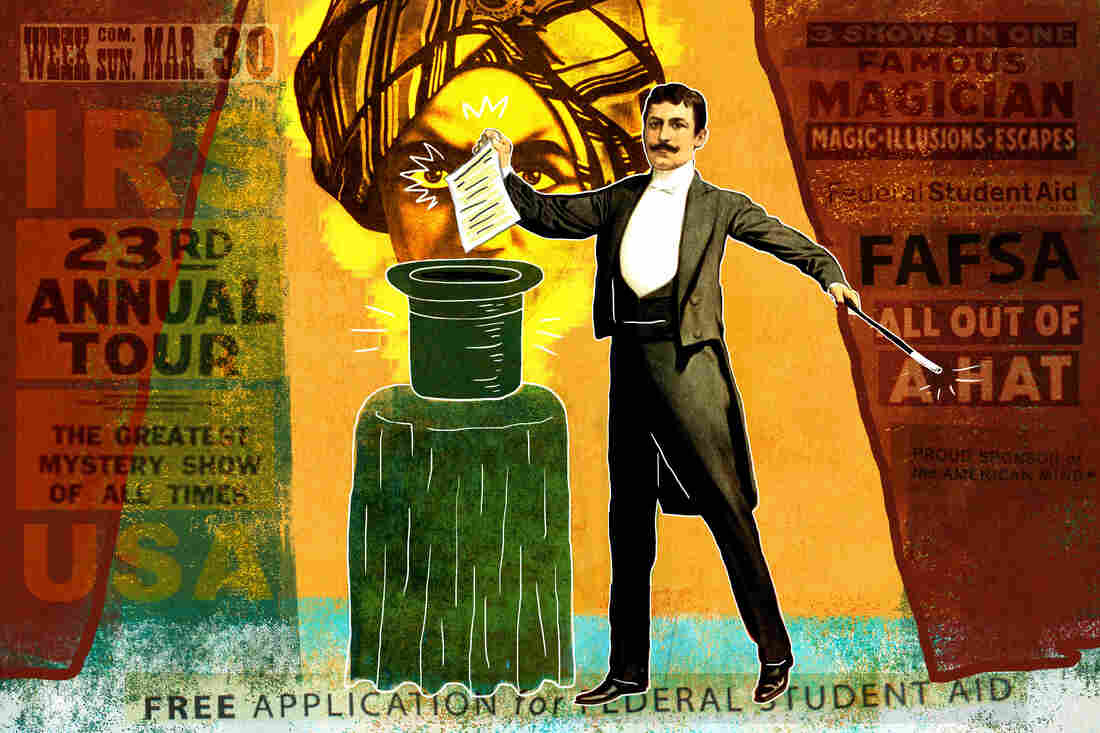A high-profile Medicare project pushing doctors and hospitals to join together to operate more efficiently has yet to save the government money. Nearly half of the groups’ care was more costly than the government estimated it would be based on historical data, federal records show.
The Centers for Medicare & Medicaid Services offers bonuses to health care practitioners who band together as accountable care organizations, or ACOs, to take care of patients. The financial incentives are intended to encourage these doctors, hospitals, nursing homes and other institutions to keep patients healthy rather than primarily treat illnesses, which is what Medicare payments traditionally have rewarded. ACOs that save a substantial amount get to keep a share of the savings as a bonus.
The Obama administration touts ACOs as one of the most promising reforms in the 2010 federal health care law. The administration set a goal that by the end of 2018, half of Medicare spending currently based on the volume of procedures a doctor or hospital performs will instead be linked to quality and frugality. But so far the ACO program generally has been a one-way street. Most doctors and hospitals have been happy to accept bonuses while declining to be on the hook for a share of excessive costs run up by their patients.
Last year, Medicare paid $60 billion to 353 ACOs to take care of nearly 6 million Medicare beneficiaries. Some ACOs made significant strides in reducing use of hospitals and other costly resources. But patients at 45 percent of groups cost Medicare more than the government had projected based on historic trends, records show. After paying bonuses to the strong performers, the ACO program resulted in a net loss of nearly $3 million to the Medicare trust fund, government records show.
“It’s turning out to be tougher to transform care and realign delivery than people had expected,” said Eric Cragun, an analyst with The Advisory Board Company, a consulting group based in Washington.
Medicare officials said most ACOs are still in their infancy, and that performance and savings will improve with experience. “In the long run we’re shooting to achieve those goals,” Sean Cavanaugh, CMS’ deputy administrator, said in an interview.
Get The Data
ACCOUNTABLE CARE ORGANIZATION PERFORMANCE 2014
Medicare expected accountable care organizations would be saving Medicare millions by now, but the program is falling short of targets, data show.
Nonetheless, the results have fallen short of what Medicare projected in 2011, when ACOs were launched. Those estimates anticipated the government would save between $10 million and $320 million during 2014.
Taking Financial Risks Is A Big Step
The ACO program’s bottom line has been hurt by the reluctance of most ACOs to accept financial responsibility for their patients. Only 7 percent of ACOs opted last year for a high-risk/high-reward deal in which they had the potential to earn larger bonuses but would have to reimburse the government should their patients cost Medicare more than expected.
The rest of the ACOs opted to avoid the potential of financial punishment even though it meant their potential bonuses would be smaller. The risk aversion proved so widespread that Medicare has given ACOs up to six years to participate without fear of penalties, instead of phasing out that option.
“Many of these ACOs are newly formed groups of doctors and hospitals, and bearing risk is a big leap,” Cavanaugh said.
Last year, 196 ACOs saved Medicare money, while 157 ACOs cost more than expected. Medicare ultimately didn’t achieve any savings because it paid bonuses to 97 ACOs. Only three of the costly ACOs had to repay Medicare for losses their patients incurred.
In Oregon, North Bend Medical Center ACO patients cost Medicare $9 million. Spending for those patients was 12 percent more than projected, the largest gap of any ACO. In Los Angeles, the government spent $20 million, or 11 percent, more than expected for ACO patients at Cedars-Sinai Medical Care Foundation. That was the largest amount in dollars. Both ACOs had chosen to be exempt from financial penalties.
North Bend dropped out earlier this year.
Cedars-Sinai said its ACO patients ended up being more expensive than other previous patients because the hospital added new physician practices specializing in cancer and heart disease, which are among the most costly conditions to treat. In a statement Thursday, Cedars said it unintentionally failed to include those patients in the comparisons it sent to Medicare and was now revising its calculations.
Even some of the ACOs that saved the most money have yet to accept financial risk. Costs for patients at Winchester Community ACO in Massachusetts were 16 percent less than Medicare estimated. The ACO earned a bonus of $5 million. Catharine Robertson, an executive with Winchester Hospital, said its cost-saving initiatives were created when the ACO was formed. One team at the ACO identified patients as high risk of getting sick and sought to intercede before they ended up requiring hospitalization.
“We’re absolutely thrilled with our success the last few years, but the reality is there’s a lot to learn about population-based management,” she said.
The largest bonus in dollars, $23 million, went to Memorial Hermann Accountable Care Organization in Houston, which was 11 percent below Medicare’s cost expectations. Christopher Lloyd, the CEO of Memorial Hermann’s ACO, credited its success to a decade’s worth of changes that improved cooperation among physicians and the hospital, as well as the creation of systems to share medical details of patients.
“The ACO when we formed it in 2012 was just an extension of what we were already doing,” Lloyd said. He said committed ACOs could make the same improvements in three to four years. “What took us 10 years to build does not take 10 years to replicate,” he said. Still, Memorial Hermann, like Winchester, is not yet accepting risk.
Difficulties In Implementation
To wring overall savings for Medicare, the government faces a bind, analysts said. If Medicare makes the potential of repayments mandatory, many existing ACOs may drop out and new ones are less likely to join. If the majority of ACOs continue to risk no financial repercussions, they have less incentive to save the government money. And without showing savings, it will be hard for Medicare to expand the ACO approach.
Clif Gaus, president of the National Association of ACOs, said Medicare should be making it easier for ACOs to earn bonuses as they assemble their operations. “Any startup company, I don’t care who they are, never makes profits in the early years,” Gaus said. “Starting a health care delivery system is just as hard, if not harder, than starting a Facebook or an Amazon.”
Because Medicare sets its expectations based on national spending averages, “it’s really hard to save money in some parts of the country,” said David Muhlestein, an executive at the consulting firm Leavitt Partners based in Salt Lake City. “We’ve talked to ACOs that have joined the program, started to make changes and decided that it’s really too much work right now.”
Sharp Healthcare, a well-regarded five-hospital system in San Diego, dropped out of the program last year after concluding it might not be able to avoid penalties. In a financial statement, Sharp said that because Medicare’s assessments are “based on national financial trend factors that are not adjusted for specific conditions that an ACO is facing in a particular region (e.g., San Diego), the model was financially detrimental to Sharp ACO.”
University of Virginia professor Jeff Goldsmith, a longtime ACO critic, said the model is flawed. Consumers don’t actively opt to participate in the ACOs and don’t share in any savings, so they lack financial incentives to help keep costs down, he said. ACOs also have limited leverage to control the costs incurred by highly paid specialists such as surgeons and cardiologists. Patients in ACOs can still go to any doctor who accepts Medicare’s regular method of paying, in which they receive a set fee based on the nature of the service without regard to its outcome.
“Faux managed care is actually harder to do than real managed care,” Goldsmith said. The ACO program, he said, “has a bad enough reputation in the provider community that is not going to grow sufficiently to replace regular Medicare.”
The Obama administration is more optimistic. The administration said patients are benefiting with better care, as most quality measures Medicare is using to track ACO performance improved between 2013 and 2014.
Actuaries at CMS believe the ACOs are performing better than they appear when compared with the historical benchmarks that the health law established and that CMS has been using. The actuaries employed an alternative method in a report issued last spring, comparing Medicare spending trends in places with ACOs and those without, and concluded that, overall, ACOs were saving money.
Still, ACOs’ appetite for taking risk remains small. The number of ACOs opting for the largest potential bonuses and penalties has shrunk from 32 at the start of the program to 19. Rob Lazerow, an Advisory Board consultant, said, “In a world where ACOs are still optional, CMS still has to make it attractive for providers to want to participate.”
This entry passed through the Full-Text RSS service – if this is your content and you’re reading it on someone else’s site, please read the FAQ at fivefilters.org/content-only/faq.php#publishers.





